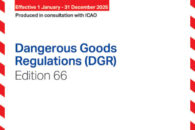Why device manufacturers must build compliance into their R&D
When your product runs on lithium batteries, it isn’t enough to comply with current regulations. Your survival may depend on how well you anticipate future restrictions.
Bluesmart learned that lesson the hard way. Earlier this month, the maker of “smart” luggage had to shut down due to airlines’ ban of luggage with non-removable batteries. In a matter of weeks, the market for Bluesmart’s product went from thriving to nearly non-existent.
This is a terrible story. An innovative company, filling a real customer need, getting fatally blindsided by new restrictions.
At the same time, it’s a cautionary tale. Dangerous Goods compliance should never just be about avoiding fines. Compliance should be a way of life—an ongoing process that starts with product development and informs every facet of production and transport.
Here’s why companies need to make hazmat compliance part of their research and development process.
What happened at Bluesmart?
It’s important to point out that government regulations didn’t cripple Bluesmart. In fact, the company’s products were in compliance with both U.S. and international regulations.
In a statement, the company said, “Before and at the time of production, we did our due diligence to make sure that we complied with all international regulations defined by DOT and FAA.”
The restrictions that destroyed Bluesmart’s market didn’t come from any government, but from airlines acting on their own initiative. Those restrictions were a cruel blow to the company—not to mention its customers, who are now stuck with expensive luggage they can no longer check on commercial flights.
But such restrictions are not unprecedented. In 2015, Lufthansa and other airlines imposed their own bans on excepted standalone lithium batteries (from all aircraft) and fully regulated lithium battery shipments (from passenger aircraft). Early the following year, ICAO incorporated many of these restrictions into sweeping new regulations.
Could Bluesmart have predicted the airlines’ ban of luggage with non-removable batteries? Possibly. Would their products still have a market if they had anticipated such a ban? Almost certainly.
Is it fair to expect organizations to anticipate every possible future restriction that could affect their product offerings? Probably not—but in Dangerous Goods transport, “safe” trumps “fair” every time.
The two lessons of Bluesmart
There are two lessons hazmat shippers can take from the demise of Bluesmart:
- Compliance is not just about government regulations. Any party with an interest in safety can impose restrictions. Carriers, obviously, can limit what they’ll accept, but every partner in your supply chain may have its own restrictions and limitations.
- Compliance shouldn’t start in your shipping department. When your products are (or include) regulated materials, compliance should be part of the research and development process.
It’s not unreasonable to expect product development teams to design products that are compliant with current regulations, although it can require a far more dynamic approach to compliance than many businesses currently employ. For instance, we’ve long advocated that teams who design lithium battery devices take lithium battery training courses.
But how are your R&D people supposed to anticipate restrictions that might not happen for years? That’s where consultants from Labelmaster Services can make a huge impact.
Developing products with compliance built in
Labelmaster consultants have the regulatory background both to understand the impact of current regulations and to anticipate coming changes in the global compliance environment.
We work with clients’ R&D departments up to six years before a new product comes out. We ask development teams questions about how products will be built, what their potential markets will be, and how the products will be shipped to those markets. Then we make recommendations that will allow those products to be shipped compliantly—not just today, but deep into the future.
Sometimes, we even recommend that a product be scrapped. That sounds like a bad outcome, but it’s really a great outcome—we’ve saved clients countless dollars by showing them they just couldn’t make a certain product compliant.
If, early in the development process, someone had advised Bluesmart to make its batteries removable, the company would still be in business today.
That’s not meant as a criticism of the company or its management—they acted in good faith, thought they had all their bases covered, and met what many will say was an unjust fate. We hope their next venture is a durable success.
And to avoid more stories like this, we also hope more companies make compliance part of their product development process. To learn how a Labelmaster consultant can help your organization, contact Labelmaster Services or call 800.578.4955.
Labelmaster is a full-service provider of goods and services for hazardous materials and Dangerous Goods professionals, shippers, transport operators and EH&S providers. See our full line of solutions at labelmaster.com.




